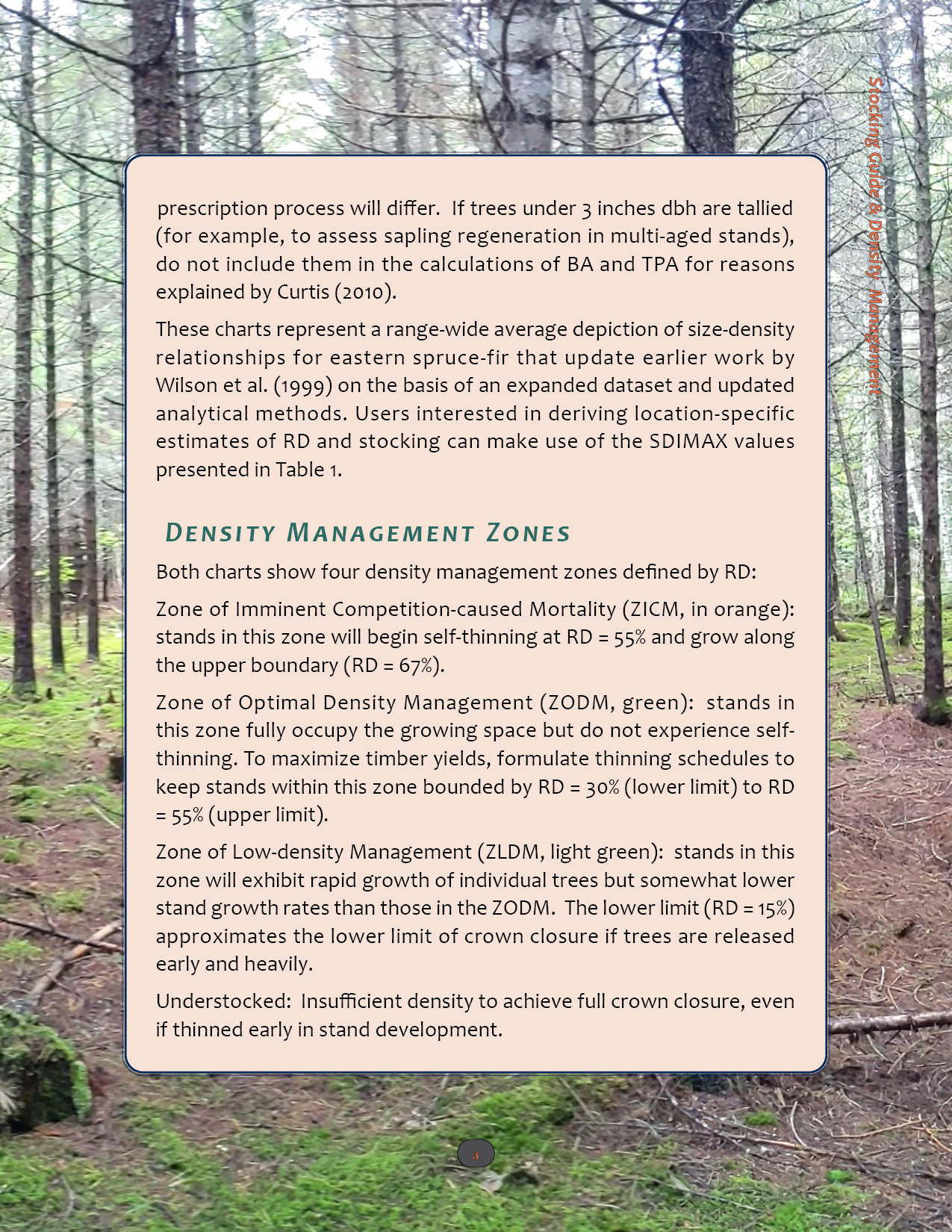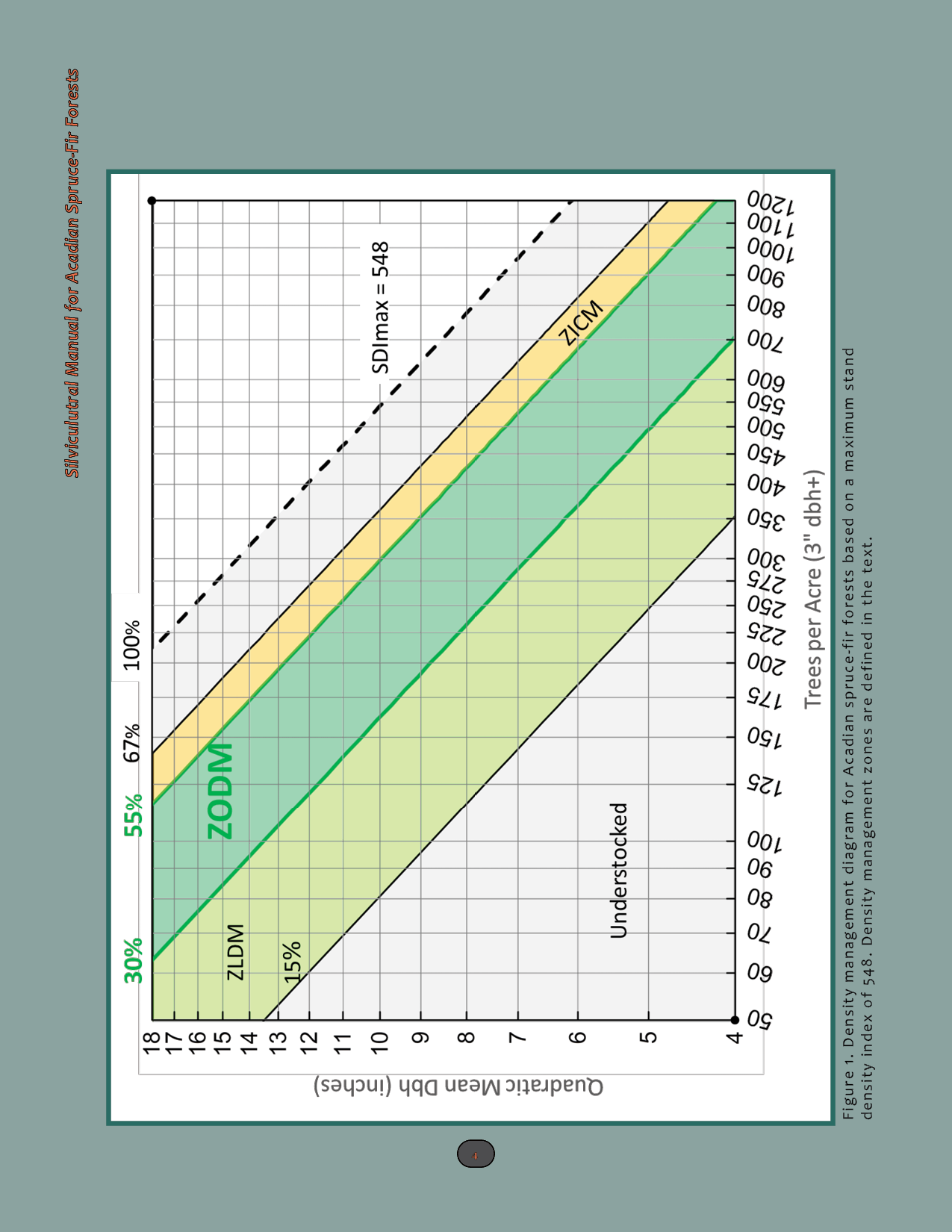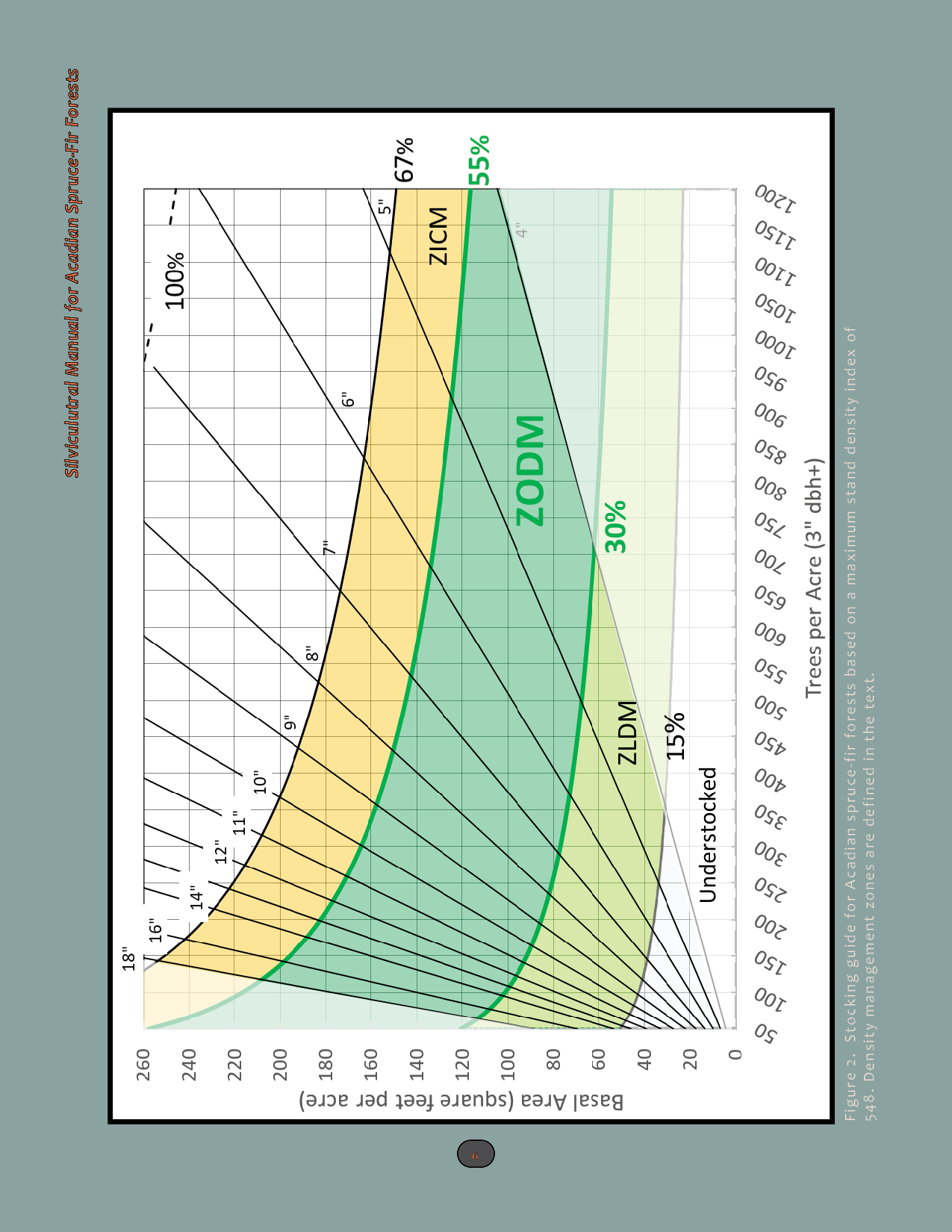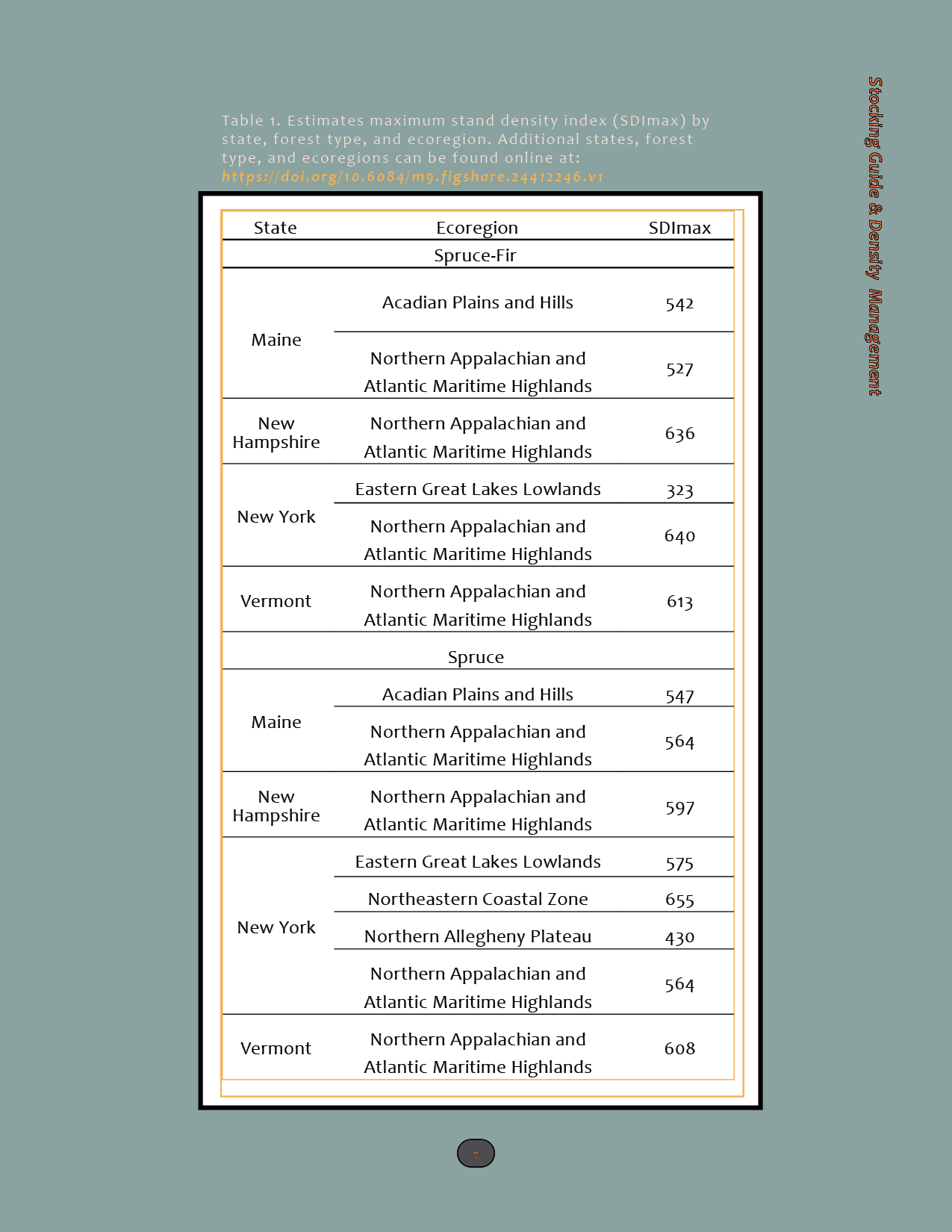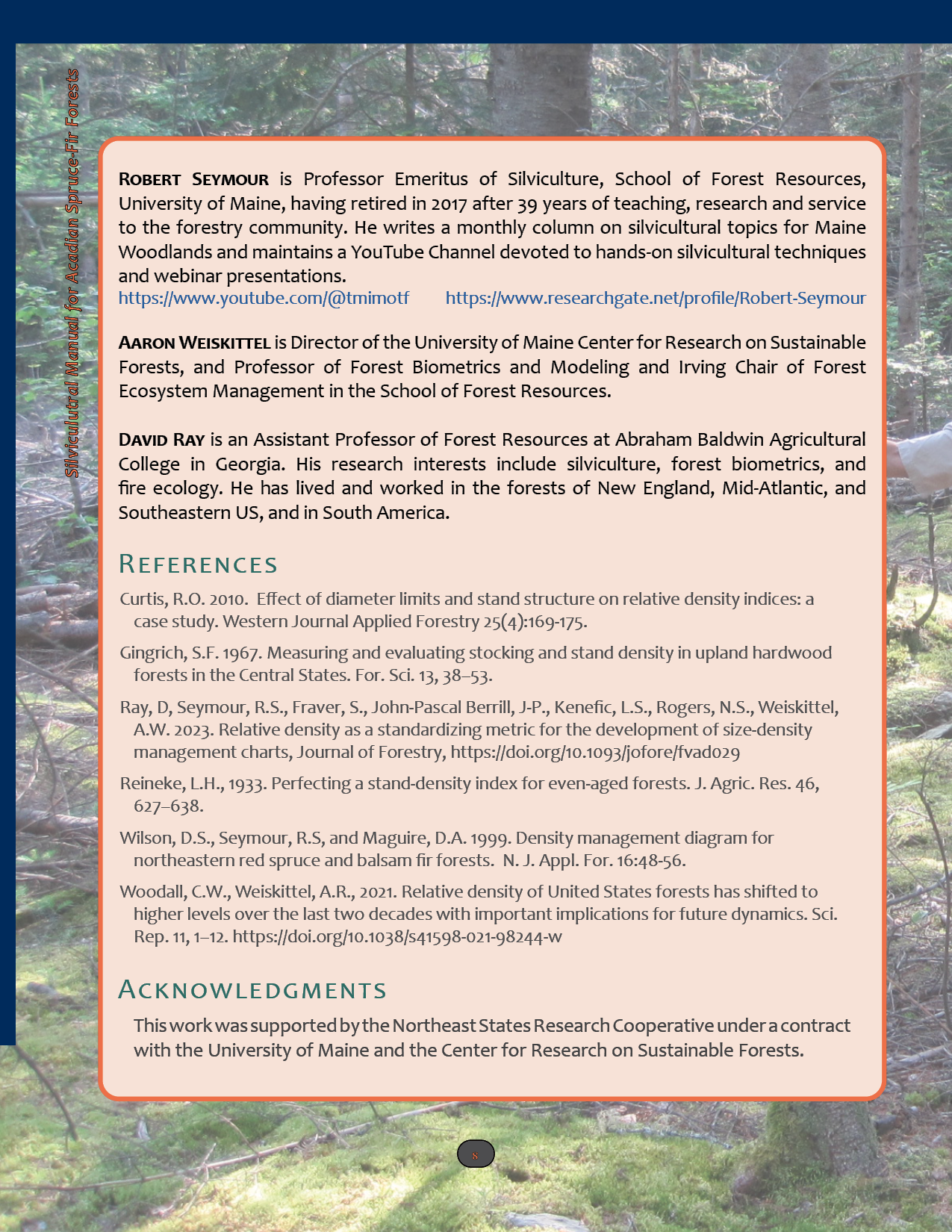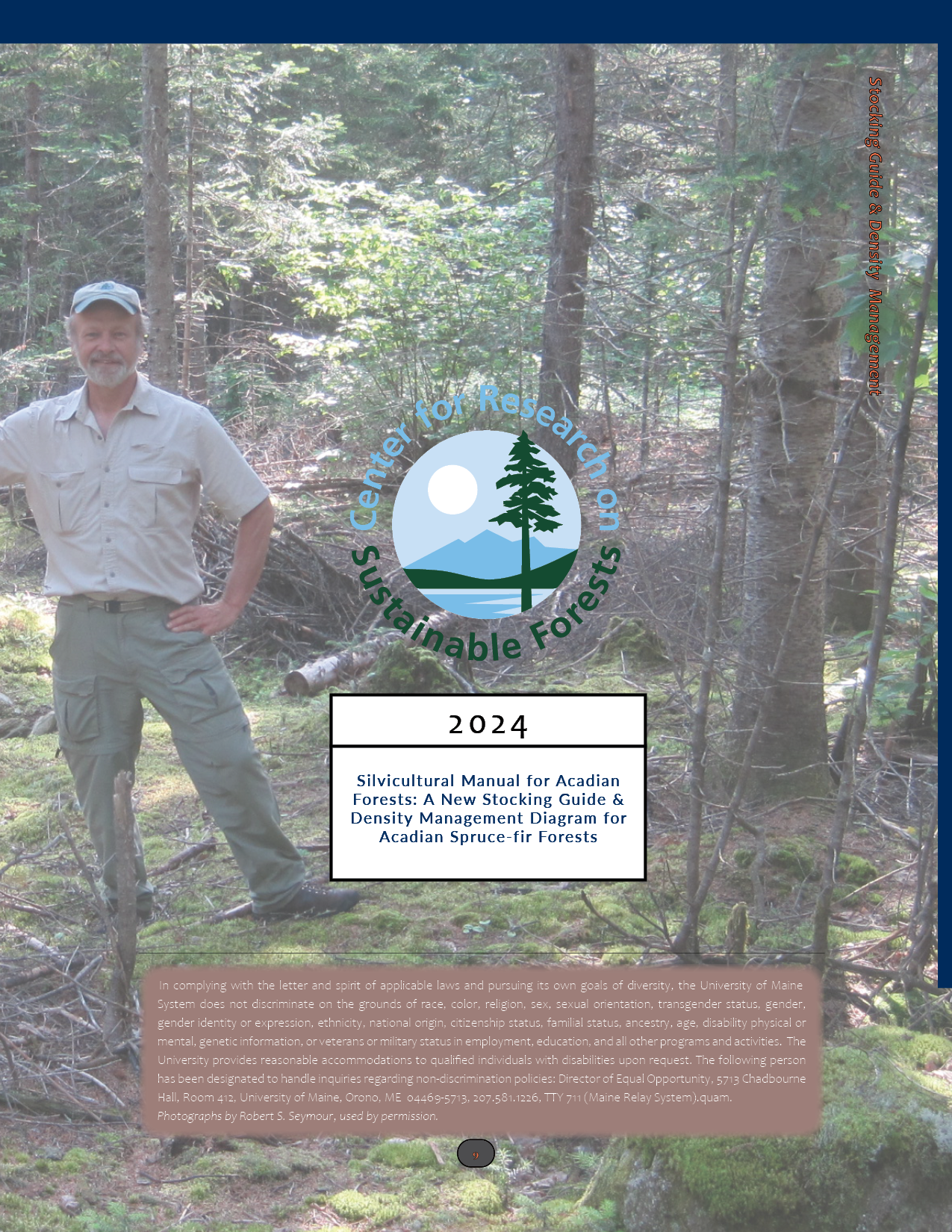A Silvicultural Manual for Acadian Spruce-Fir Forests
 Fifty years ago, Robert Frank and John Bjorkbom (1973) released “A Silvicultural Guide for Spruce-fir in the Northeast.” Typical of U.S. Forest Service publications during this era, the guide included prescription keys instructing the forester to follow a rigid, even-aged stand development framework. This emphasis on even-aged silviculture was driven by the extensive area of single-cohort stands common at that time that originated from heavy cuttings and spruce budworm mortality during a 50-year period between 1880 and 1930 (Seymour 1985, 1992). The 1973 Guide was a distinct departure from the previous silvicultural paradigm captured in the capstone publication by Marinus Westveld (1953), the pioneering silviculturist who had long advocated partial cutting systems to favor red spruce over balsam fir. The 1973 Guide also included an uneven-aged prescription key based on various reverse-J-shaped diameter distributions, but these were rarely applied in practice (Seymour & Kenefic 1998) and have been largely supplanted by more accommodating irregular shelterwood systems (Raymond et al. 2009; O’Hara 2014; McGrath et al. 2022; Seymour 1995, 2024).
Fifty years ago, Robert Frank and John Bjorkbom (1973) released “A Silvicultural Guide for Spruce-fir in the Northeast.” Typical of U.S. Forest Service publications during this era, the guide included prescription keys instructing the forester to follow a rigid, even-aged stand development framework. This emphasis on even-aged silviculture was driven by the extensive area of single-cohort stands common at that time that originated from heavy cuttings and spruce budworm mortality during a 50-year period between 1880 and 1930 (Seymour 1985, 1992). The 1973 Guide was a distinct departure from the previous silvicultural paradigm captured in the capstone publication by Marinus Westveld (1953), the pioneering silviculturist who had long advocated partial cutting systems to favor red spruce over balsam fir. The 1973 Guide also included an uneven-aged prescription key based on various reverse-J-shaped diameter distributions, but these were rarely applied in practice (Seymour & Kenefic 1998) and have been largely supplanted by more accommodating irregular shelterwood systems (Raymond et al. 2009; O’Hara 2014; McGrath et al. 2022; Seymour 1995, 2024).
The purpose of this new manual is to (1) synthesize all relevant research findings and professional experience in one accessible document, and (2) describe silvicultural approaches to achieve landowner objectives ranging from commodity production to conserving biodiversity.
In this new manual, Robert Seymour, University of Maine Professor Emeritus of Silviculture in the School of Forest Resources, summarizes the voluminous literature and research findings that have accumulated over the last five decades under seven major themes (plus supplementary materials) relevant to the silvicultural treatment of Acadian spruce-fir forests:
-
- The Acadian Spruce-fir Resource: History and Current (2023) Condition
- Assessing Soils and Site Quality
- Production Forestry: Managing for High Timber Yields
- Stocking Guide and Density Management Diagram
- Natural Regeneration
- Multi-aged Silviculture Systems
- Ecological Silviculture
- Supplementary Materials
Note. Although silviculture is a necessarily prescriptive discipline, no decision trees or keys are presented. The wide array of species, structures, and sites in the Acadian region defies any attempt at a silvicultural cookbook. Silvicultural solutions must be devised uniquely for each situation, informed by the guidance offered in this manual.
Stocking Guide and Density Management Diagram (pdf)
Accurate determination of stand stocking is crucial in making rigorous silvicultural prescriptions that optimally utilize available growing space over the rotation. This paper presents newly constructed diagrams of density management diagrams and stocking guides intended for practical and theoretical use in the Acadian spruce-fir region.
References
McGrath, T., Pulsifer, M., Seymour, R., et al. 2021. Nova Scotia Silvicultural Guide for the Ecological Matrix. Nova Scotia Department of Lands and Forestry. 193 p.
O’Hara, K.L. 2014. Multiaged Silviculture. New York: Oxford University Press. 213 p.
Raymond, P., Bedard, S., Roy, V, Larouche, C., & Tremblay, S. 2009. The irregular shelterwood system: Review, classification, and potential application to forests affected by partial disturbances. Journal of Forestry 107: 405-413.
Seymour, R. S. 1985. Forecasting growth and yield of budworm-infested forests. Part I: Eastern North America. In Recent Advances in Spruce Budworms Research (pp 200-213), Proc. CANUSA
symposium, Bangor, ME, Sept 16-20, 1984. 527 p.
Seymour, R. S. 1992. The red spruce-balsam fir forest of Maine: Evolution of silvicultural practice in response to stand development patterns and disturbances. In M.J. Kelty, B.C. Larson, & C.D. Oliver (eds.), The Ecology and Silviculture of Mixed-species forests. A festschrift for David M. Smith (pp. 217-244). Norwell, MA: Kluwer Publishers. 287 p.
Seymour, R. S. 1995. The Northeastern Region. p. 31-79 In J.W. Barrett (ed.), Regional Silviculture of the United States (3rd ed.). Hoboken, NJ: John Wiley and Sons. 643 p.
Seymour. R. S. 2024. Ecological Silviculture for Acadian Forests. In B.J. Palik & A.W. D’Amato (eds). Ecological Silvicultural Systems: Exemplary Models for Sustainable Forest Management. Hoboken, NJ: John Wiley and Sons.
Seymour, R. S. & Kenefic, L. S. 1998. Balance and sustainability in multi-aged stands: a northern conifer case study. Journal of Forestry 96:12-17.
Westveld, M. 1953. Ecology and silviculture of the spruce-fir forests of eastern North America. Journal of Forestry 51:422-430.



